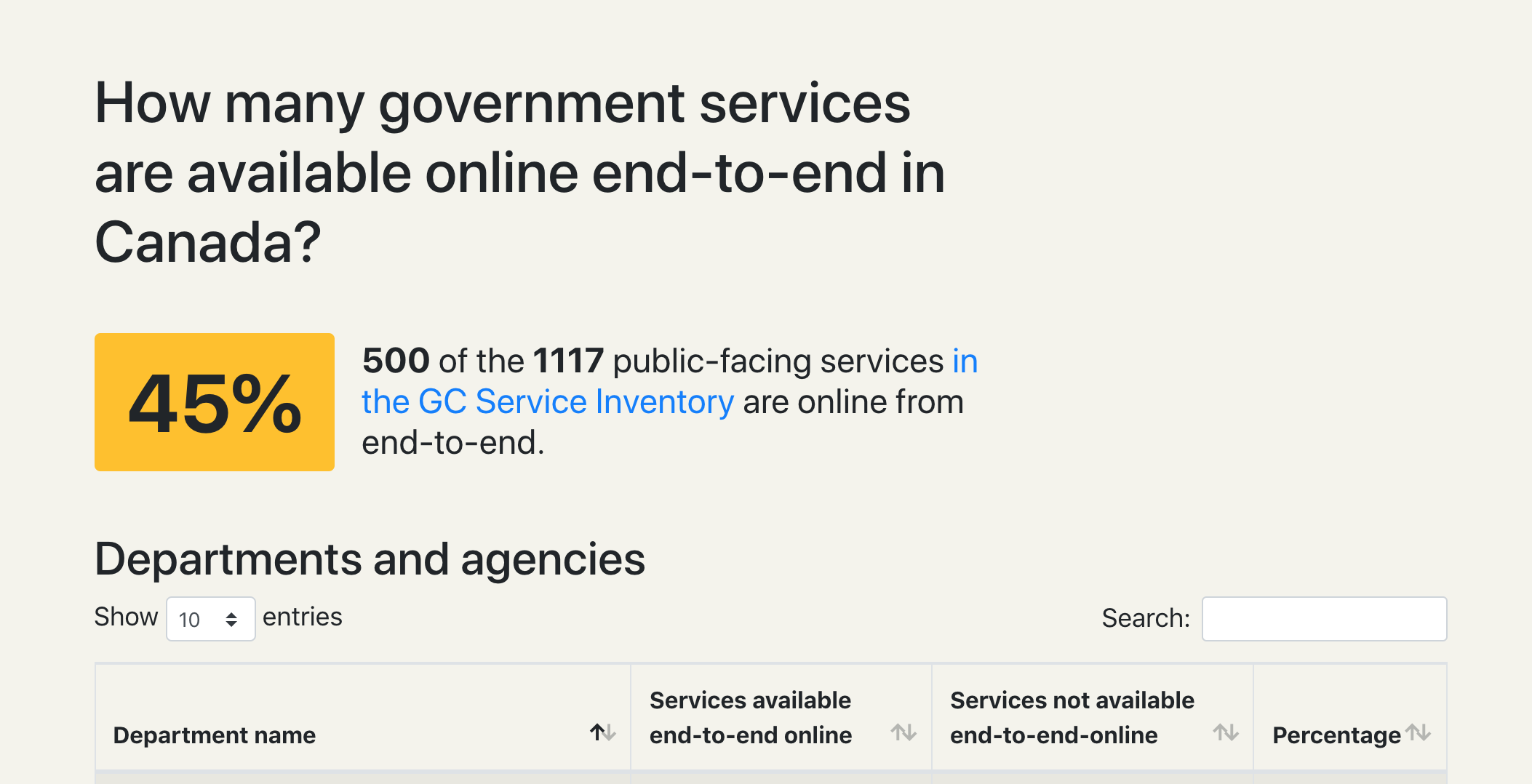How many Government of Canada services are online from start to finish?
Update: In December 2021, I updated the methodology used in the end-to-end services analysis. Following the update, services that are all “not applicable” are no longer counted as fully online. Overall, 19% of Government of Canada services are online end-to-end, instead of 45%. This more closely matches the official methodology recently published on the GC InfoBase website.
Back in early 2020 I wrote a blog post about the quality of federal government services (something that my career is by and large dedicated to improving!). It included a litmus test for government services: can I complete this service online, on my phone, from start to finish, at two in the morning?
Getting accurate data on how many government services meet that mark is challenging. It’s challenging for any government, not just Canada! Even determining how many government services exist across a vast range of departments and agencies is a struggle. Although it was (very sadly) decommissioned this past year, the United Kingdom’s Performance platform was one of the first and best efforts at doing this. It mapped out both how many services the government offered, and how effective they were at meeting a set of consistent performance criteria. UK digital government folks have also written some great pieces on what a service is, which isn’t always a straightforward question.
In Canada, a team in the Treasury Board Secretariat’s Office of the CIO publishes the GC Service Inventory, which lists each service offered by federal departments and agencies. Although it originally only included a handful of departments, the 2019-2020 update to the dataset included services from more than 70 departments and agencies, along with a range of indicators about each service. I was very stoked to see this get published publicly on the Open Government website, and I’m a huge fan of the team that produced it.
Counting up end-to-end services

Over the past couple weekends, I put together a new civic tech website that analyzes the GC Service Inventory data and comes up with a tally of end-to-end services, across the government and across each department or agency.
According to the 2019-2020 data, 45% of Government of Canada services are available from end-to-end. That’s actually pretty solid, and quite a bit higher than I was expecting. This percentage varies fairly significantly from one department to the next, and it doesn’t factor in the volume of service transactions (for example, a service used by hundreds of thousands of people each year is weighted the same as a service only used by a dozen).
Services in the GC Service Inventory data set are also self-reported by departments, each of whom may have interpreted the online interactions criteria (there are six) slightly differently. Hopefully this data set continues to improve and grow each year, as departments add any missing services.
Unlike some previous projects (mainly, Is this blocked in my department?) I don’t have any solid ideas on how to gather feedback about any missing or inaccurate service entries. One approach would be a parallel, community-contributed data set (I’ve added a very basic Google Form option to suggest corrections to existing entries, but adding new services would be more complicated) and ideally there would be a clear mechanism to report issues to each department directly. If you have thoughts or suggestions I’d love to hear them!
You can take a look at the methodology for more on how the site works, or the GitHub repository for technical details. Check out the website, see how your department stacks up, and let me know what you think!